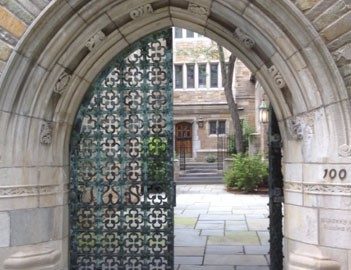Elite Colleges Await Your Decision
The term “yield” in the college admissions field refers to the percentage of admitted students who elect to enroll in a particular college or university after they have been offered admission. It is simply the result obtained by dividing the number of students who have chosen to enroll for the fall semester by the number of offers of acceptance that were sent to students.
A school’s yield rate is an especially meaningful metric when it’s compared to the yields of colleges with which the school directly competes for students. As an admissions data-driven metric, yield is also important in that it’s used by college ranking services such as U.S. News and World Reports as one of several measures of a school’s degree of selectivity. A high yield rate is considered one of the signs of a highly selective college. As a result, all colleges, even Ivy League and other top-tier institutions, care about maintaining a high yield.
Yield rates have been declining steadily for over a decade. This decline has been a factor of the ramping up of the volume of college applications. Due to the current extreme intensity of competition in obtaining admission to elite colleges, guidance counselors advise students, especially those who wish to attend an elite institution, to apply to multiple schools.
Admission to the best schools has always been somewhat competitive, so what explains the ever-sharper rise in applications in recent years? The spike in volume is the result of several factors, among them: the widespread adoption of the Common Application, the ease of online submissions, the relative stability of fees, increasingly sophisticated enrollment management techniques designed to encourage students to apply to a given school and the growing number of international students applying to American universities. The more colleges that a student applies to… the more colleges they are likely to be accepted by. Only one of these colleges will be chosen by the student and will see a positive impact on their yield. The rest will post a zero.
It is not uncommon for a school to base specific admissions decisions on their potential impact on yield. For example, it may be evident to an admissions office that a student has applied to them as a safety school based on the very high quality of the student’s academic profile. If this is the case, the chance that the student will accept their offer of admission is quite low due to the better offers that he or she is almost certain to have received. To avoid a near-certain hit to their yield, the school may choose to waitlist rather than admit this very well qualified applicant. This example shows the extent to which schools may go to protect their yield rate.
There has also been concern expressed about the propriety of marketing measures taken by some schools to raise their yield during the period that at least one professional trade association maintains should be a “cooling-off” time. This is the interval between the date when acceptance letters were issued and the May 1 deadline for student decisions. This is advocated as a “good practice” by the National Association of College Admissions Professionals (NACAC). Elite institutions, like almost all schools, take steps to elicit positive decisions by their accepted students during this period. As part of their post-acceptance recruiting efforts, schools typically engage in some or all of the following activities:
- Emails, brochures, campus magazines, postcards, and hand-written notes
- T-shirts, coffee cups, or other small gifts
- Calls by current students, faculty, staff, and/or alumni
- Hosting accepted students on campus or regionally at elegant receptions.
It is when these ordinary marketing efforts are exceeded, substantially in certain cases, that students and families should be wary. In these instances, students should discuss the situation with their IvySelect consultant, who will be able to re-establish balance in the student’s decision-making process.
Since student decisions aren’t due until May 1, this year’s yield rates won’t be published until this summer. Below is a Table with the latest available yield rates for the Ivy League and a few sample institutions:
Table: Latest Available Yield Rates for Selected Top-Tier Institutions
| Institution | Yield % |
| Bard College | 66 |
| Brown University | 56 |
| Columbia University | 63 |
| Cornell University | 51 |
| Dartmouth College | 53 |
| Georgetown University | 48 |
| Harvard University | 80 |
| Mass. Institute of Technology | 74 |
| Notre Dame University | 56 |
| Princeton | 69 |
| Stanford | 81 |
| U.S. Air Force Academy | 80 |
| U.S. Military Academy | 83 |
| U.S. Naval Academy | 87 |
| University of Chicago | 66 |
| University of Pennsylvania | 69 |
| Yale University | 70
|
Since colleges are concerned about yield, you can leverage this concern to your advantage with the expert assistance of your IvySelect college admissions consultant. We learn about your goals, academic records, preferences, skills, and interests, and then we apply this information to guide you to devise, develop, refine, and put into action your personal college admissions strategy. We will also collaborate in building a target list of 12 or 13 elite schools. These schools will range from your dream school at the high end down to one or two less elite safety schools.
We offer a full range of college admissions services to fully assist you in gaining admission to targeted institutions. We focus on helping you present your best self to the top-tier colleges that fit you best in all aspects of the admissions process.





